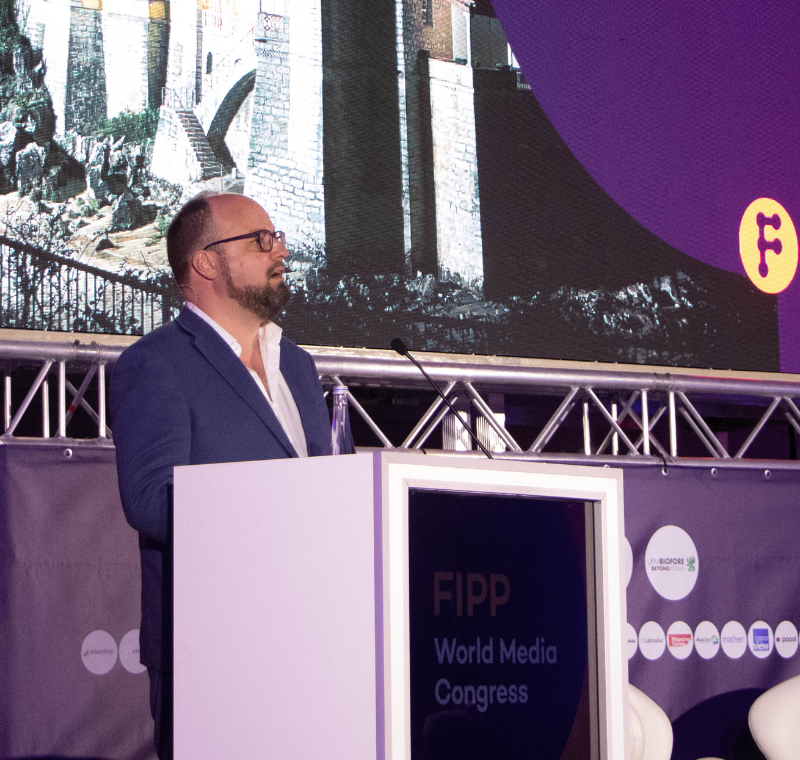Seamless content management integration is key, say FIPP Congress speakers
The proliferation of digital platforms and social media means more resources and outlets for editors, but they also require more resources and time for editorial and production teams, was one of the outcomes from a session at FIPP’s Congress in Rome today. Content management systems can help integrate these new tools into the editorial process to make it more cost- and time-efficient.
“It’s all about getting the right story to the right audience, and you need tools to do that properly,” said Hans Janssen, CEO and co-founder of Woodwing, The Netherlands (pictured).
Content management is about realising your content strategy and, said Janssen, repurposing your staff, your processes, and your content.
The Woodwing platform allows multi-channel publishing. Editorial teams can collect story elements (such as text and photos) into ‘dossiers.’ From these dossiers, they can start working on a particular story for multiple outlets. Story elements can also be organised specifically for the different channels, such as web channels and photo channels.
The idea is you can have one user interface for all channels, said Janssen, so that you can do things as efficiently as possible. Woodwing allows editors to integrate elements into a web article or a social media update from the same interface.
“If you don’t have a system in place to publish to a variety of channels, there’s no point in trying to publish,” said Janssen. The Woodwing interface has also allowed for innovative revenue streams, such as a syndicated-image portal that Bauer Media has implemented to repurpose photos.
In addition to repurposing content across different channels, content management systems also allow content optimisation, said Bard Farstad, founder and chairman of product innovation board for eZ Systems, Norway. ez Systems has worked with publishing brands including Vogue, Grazia, Elle, and The Financial Times.
Content management systems seamless integrate two concepts that Farstad stated will change the way we work in the future: clouds and open API. “You have different systems that can freely speak to each other,” said Farstad when defining API.
In addition to organisation and cross-platform usage, content management can also give significant insights into customer interaction. “You get a very clear picture of where the visitor is, and what content is doing well,” said Farstad about eZ Systems’ real-time customer analytics tools. It also displays predictive analytics about how well each story is doing, and how well it should be doing based on history. These Insights as well as editorially supporting tools can help editors switch out different types of stories and test what works best to engage readers.
Although content management systems are becoming increasingly utilized by traditional print brands in their digital-first strategies, the panellists were quick to point out that there is more driving the success than just pulling elements together.
“The consumption of a digital brand really depends on how well it is done,” said Farstad, adding that if done in an engaging way, publishers will get the audience.









